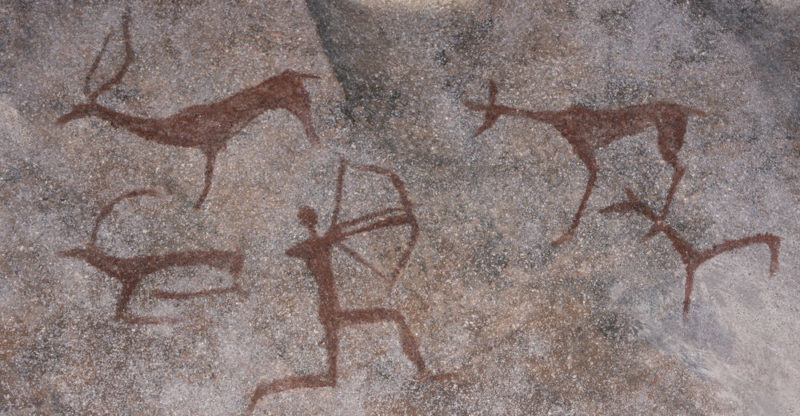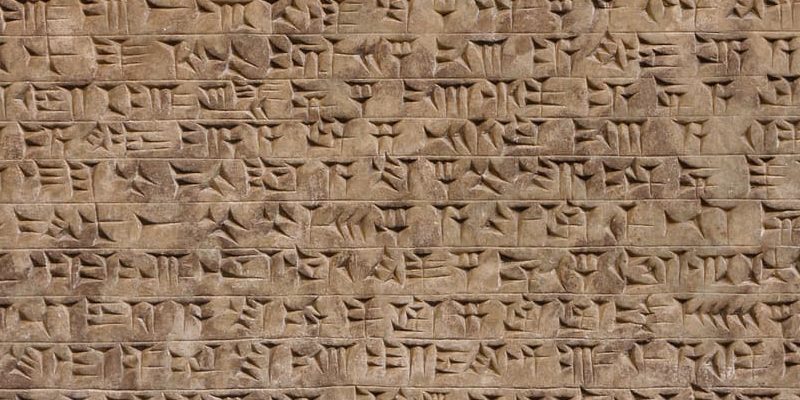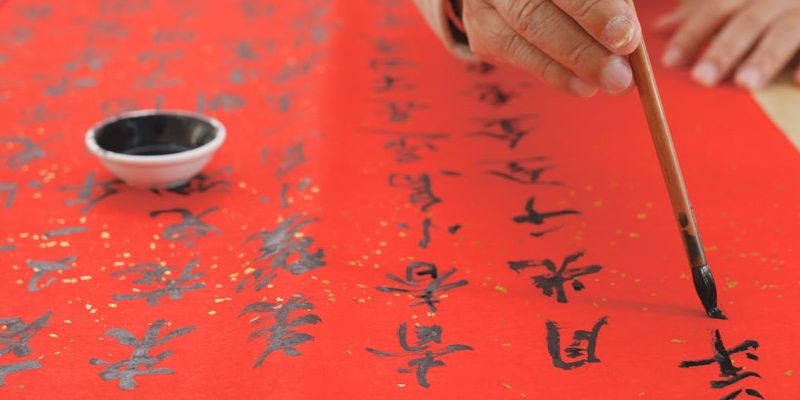We explain what writing is, how it originated and the types that exist. Also, what are its main features and functions.
What is writing?
Writing is a set of technologies for the representation of verbal language . It is a system of secondary representation of thought , which is carried out by means of visual signs or characters inscribed on some support surface.
In simpler terms, writing is a set of information preservation techniques , inscribed in a system of signs that conventionally represents spoken language .
Writing, like all technology , is an exclusively human invention that serves as an extension or aid of the body or the mind.
And serves as a screwdriver to remove the screws or put our hands can not, writing allows us to communicate with people who could not reach talking , as people absent or future, distant or even unknown.
On the other hand, writing is a physical event, which involves the inscription or the mark on a specific surface , and is a complementary technique to reading .
This is: to write (inscribe) it is necessary to learn to read (decipher) first . In this sense, writing operates as a code, a secret key, which in today's societies is learned from an early age.
Origin of writing

The first vestiges of writing arose approximately at the beginning of the Neolithic , in the year 6,000 a. C.
They are known as proto-writing because they lacked a link with the spoken language , being visual representations: drawings, pictograms, symbols .
They are the immediate predecessors of hieroglyphic, cuneiform, and pictographic writing, characteristics of ancient Egyptian , Sumerian, and Chinese cultures , respectively.
However, it can be stated that writing itself was invented in many places at once and at different times in remote antiquity .
One of the best known was the Near East around 3500 BC. C., when the ancient Sumerians adapted a previous system of clay tokens with which goods and units of time were represented .
The result was cuneiform writing : a series of inscriptions made on flexible clay.
His first alphabet appeared at that time: a syllabary that reflected the phonology and syntax of his language , and was soon copied and reproduced in neighboring languages, such as Arcadian, Eblaite, Hittite, and Ugarite.
Writing history

The history as we understand it today, begins precisely with the invention of writing and the ability to record events of civilization . All of the above is considered prehistory .
Shortly after the rise of writing in Sumer, Egypt, and China (among others), the first model of the alphabet was developed , based on the Sumerian syllabary, and belonged to the Ugarites, Canaanite inhabitants of what is now Syria.
In this alphabet only the consonants were represented , but it laid the foundations for the Aramaic and Greek alphabets to emerge later, the latter being the one that introduced the vowels.
The Greeks , a dominant culture at the time and many later, spread it to the surrounding areas, giving rise to other different alphabets, including Proto-Italic from which Latin would emerge.
At the same time, the Indus Valley Culture, in the present Indian subcontinent , had already developed its own system of proto-writing and then writing, in which Aramaic had a role.
This gave rise to the Brahmic or Indic families, mothers of the modern languages of Southeast Asia and South Asia, as well as parts of Central Asia: the Indo-European, Sino-Tibetan, Mongolian , Dravidian, Tai and probably Korean languages.
The Latin alphabet, as we know, was later imposed on Europe and North Africa during the Roman Empire .
The Latin alphabet was inherited by the Romance languages , many of them later imposed on their American colonies , all with more or less the same alphabet.
The latter would also be used by the Germanic languages : German, Polish, Anglo-Saxon and the Nordic languages.
Writing media

Writing did not always require the same supports as in its early days . From the clay tablets of the Sumerians, they soon became softer and more portable, more durable surfaces.
Wood was also used , the interior of animal skins and especially papyrus: a kind of paper made with the fibers of a very common aquatic plant in the Nile , an invention of the Egyptians. These papyri were rolled up and transported in cylindrical containers.
The invention of cellulose paper was, in this sense, a great revolution, since texts could be more portable, durable.
They could also be sewn on the edge , thus forming the first books, which would be the exclusive heritage of the Church during the European Middle Ages .
This was followed by the invention of the Printing Press in the 15th century , which allowed the massification of the book and its mechanical production, without the need for copyists or clerks, as was done until then.
The birth of the book industry that lasts to this day would not have been possible otherwise.
Types of writing
There are various writing systems, among which are:
- Synthetic and ideographic writing. It consisted of ideograms, that is, drawings, in which all the information was contained through various symbols and illustrations, as in hieroglyphs or pictograms.
- Hieratic and demotic writing. In Ancient Egypt, these two spelling models were used (one for the elite and one for the people, respectively), which combined symbols or pictograms with interconnected chains of symbols to achieve more complex meanings (a kind of running writing).
- Syllabic and alphabetic writing. It is about those writings that represent the basic syllables of a language (such as the Chinese spelling) or those that represent each individual sound of each letter (such as that of Spanish).
Its duties?

Writing fulfills various functions in human life.
Initially, the word had a magical, ritual or religious role in the communities , since it was linked to the sacred (hence the sacred books) or to power (as in royal edicts).
In any case, writing serves for the communication of ideas : the transmission of a message, no matter how simple or complex , between a sender and a receiver that can be separated in time and distance, that is, a communication in the absence of the sender .
In the same way, writing serves as an alternative memory : we can write the things we know and return to them later, without fear that oblivion will take away our knowledge .
Writing lasts longer than the spoken word and longer than thought, as evidenced in libraries or on the Internet .
Writing and reading
These two are interrelated tools : in order to write it is necessary to first know the language , that is, to be able to read what is written and decipher its contents.
An illiterate person cannot write , since he cannot read.
Literature

Writing as a form of artistic expression is the realm of literature , and it has been practiced since the invention of writing .
At first it was a way to contain ritual or sacred texts , and later it allowed to preserve the foundational or epic stories for future generations.
Today literature consists of three genres: narrative , poetry and essay .
Why is writing important?
Writing is probably the greatest of human inventions , which has allowed communication across distances and the preservation of knowledge throughout the centuries.
Thanks to writing, the accumulation of knowledge is possible and that each new generation has more knowledge available to them.
Writing devices

As writing gained its importance in human civilization , more and better artifacts were invented for writing.
One of them is the quill pen dipped in a jar of vegetable ink : the stiff nib is used for writing in the western way while the other end is used for Asian calligraphy.
In normal use, they were replaced by the pencil (graphite wrapped in wood) and the ballpoint pen (a plastic device for gently pouring ink onto paper).
There are also much more complex inventions such as the teletype, the typewriter or the computer, which use keyboards made up of buttons.
Digital writing
The last step in the history of writing supports is the so-called electronic ink or virtual paper.
The new technology gave the possibility of writing on a virtual screen , on a cybernetic sheet of paper that does not physically exist until it is printed.
This revolution goes hand in hand with the emergence of computers , the Internet and the digital culture born at the end of the 20th century.
The above content published at Collaborative Research Group is for informational and educational purposes only and has been developed by referring to reliable sources and recommendations from technology experts. We do not have any contact with official entities nor do we intend to replace the information that they emit.
Anas is an editor of a prestigious publishing company in the United States. She studied Mathematics in Arizona. Anas is also a teacher and one of her long-term goals is to build an institution that offers free education to everyone who are financially not stable.
.










